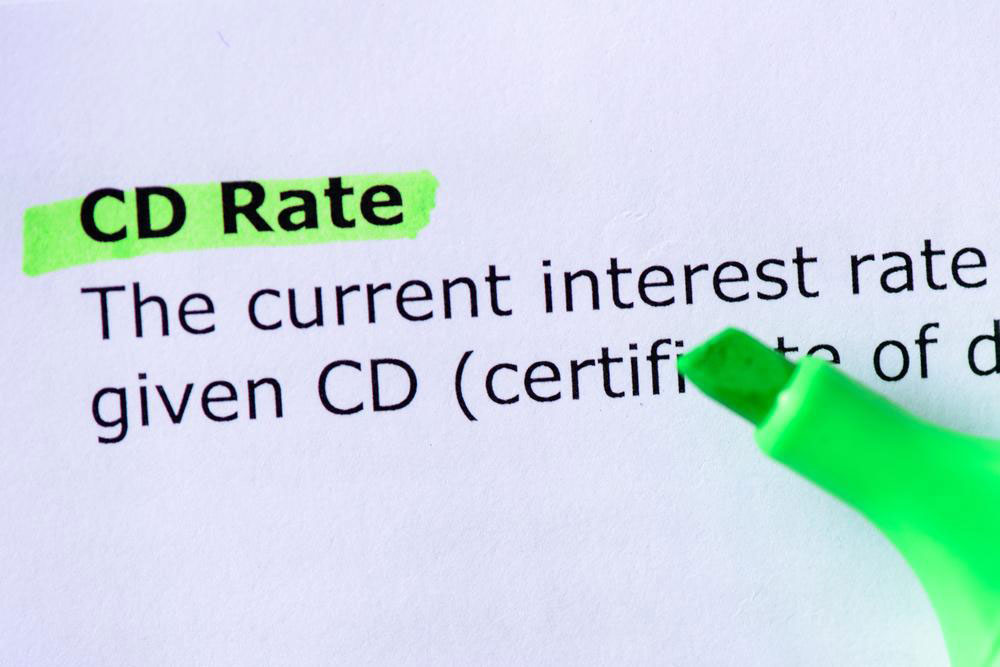Comprehensive Guide to Understanding Certificate of Deposit (CD) Rates and How to Optimize Your Investments
This in-depth guide explores everything you need to know about Certificate of Deposit (CD) rates, from understanding what influences them, selecting the right CD type, to maximizing your investment returns. Learn key strategies for choosing the best terms, securing competitive rates, and avoiding penalties, making CDs a smart, safe option for disciplined savers seeking predictable growth. Perfect for those looking to enhance their savings plan with balanced, secure investments tailored to their financial goals.

Comprehensive Guide to Understanding Certificate of Deposit (CD) Rates and How to Optimize Your Investments
In the world of personal finance and savings strategies, Certificate of Deposit (CD) accounts stand out as a popular low-risk investment option. These financial products are offered by banks and credit unions, enabling savers to earn predictable interest over a fixed period. Understanding what influences CD rates, how to choose the right CD, and how to maximize your returns is crucial for anyone aiming to build a reliable savings portfolio. This comprehensive guide aims to demystify the intricacies of CD rates, provide actionable tips on selecting suitable CDs, and explore ways to leverage them effectively for your financial goals.
To begin, let’s understand what a Certificate of Deposit is. Essentially, a CD is a deposit account that pays a fixed interest rate for a specified term—ranging from a few months to several years. As a secured investment, CDs are considered very safe, especially when issued by FDIC-insured banks or NCUA-backed credit unions, which guarantee deposits up to $250,000 per depositor, per institution. This safety net makes CDs an attractive choice for conservative investors, retirees, or anyone seeking stable income without risking principal loss.
But what exactly influences the interest rates offered on CDs? CD rates fluctuate based on multiple economic factors, including prevailing market interest rates, inflation rates, and monetary policies enacted by central banks. When the Federal Reserve raises interest rates, new CD offerings tend to have higher rates, whereas rates tend to fall during periods of economic downturn or low inflation. The competitiveness among financial institutions also influences CD rates, as banks and credit unions seek to attract deposits.
Choosing the right CD involves understanding your personal financial situation and your investment time horizon. Here are detailed steps to guide you through the process of opening a CD and making the most of your investment:
Select a Trusted and Insured Financial Institution
Always verify that the bank or credit union you choose is insured by the FDIC or NCUA. This insurance protects your deposits up to the legal limits, ensuring peace of mind even if the financial institution faces difficulties. Reputable institutions often provide competitive rates and transparent terms, so it pays to do some research beforehand.
Decide on the Type of CD Suited to Your Needs
Several types of CDs are available, each designed with different features to meet specific savings goals. Traditional fixed-rate CDs are the simplest and most common, offering a fixed interest rate until maturity. Bump-up CDs allow you to request a higher rate if market rates improve during your term. Callable CDs give the issuer the right to redeem the CD before maturity, which might carry higher yields but also comes with reinvestment risk. Understanding these options helps you align your choice with your financial objectives.
Determine the Appropriate Term Length
CD terms vary widely—ranging from as short as three months to five years or more. Longer terms often offer higher interest rates, but they also tie up your funds longer, reducing liquidity. Financial advisors recommend assessing your cash flow needs and liquidity preferences before locking in a particular duration. If you anticipate needing access to your funds within a short period, a shorter-term CD or laddering strategy might be more suitable.
Select Your Interest Payment Schedule
Decide how often you want to receive interest payments—monthly, quarterly, annually, or at maturity. Some investors prefer monthly or quarterly payouts for regular income, while others choose to reinvest all interest to maximize growth compounded over time. Understanding the payout options ensures your investment aligns with your income needs and reinvestment strategies.
Open Your CD Account
The process involves providing personal information like your name, address, Social Security number, and a valid ID. You may also need to specify the amount you wish to deposit and the term length. Many banks allow online account opening, streamlining the process for convenience.
Fund Your CD
Once your account is established, your next step is funding the CD via electronic transfer, check, or wire transfer. It’s important to compare rates across multiple banks and credit unions, as offers can vary significantly. Shopping around can help you secure the best rate and maximum return on your savings. Keep in mind that some institutions may impose minimum deposit requirements, which can range from $500 to several thousand dollars depending on the institution and the type of CD.
Additionally, understanding the implications of early withdrawal is vital. Most CDs impose penalties if you withdraw before maturity, which can eat into your interest earnings or even principal. Therefore, match your CD term to your liquidity needs to avoid unnecessary penalties.
In conclusion, Certificates of Deposit are an excellent savings tool for individuals prioritizing safety and predictable returns. By understanding what influences CD rates, choosing the right type and term, and shopping around for the best offers, investors can maximize their gains while enjoying the security that insured deposits provide. Whether you’re building an emergency fund, saving for a specific goal, or diversifying your investment portfolio, CDs can be a valuable addition if managed thoughtfully.
Remember, staying informed about economic trends and periodically reviewing your investment strategy ensures that your savings grow efficiently and safely over time.





